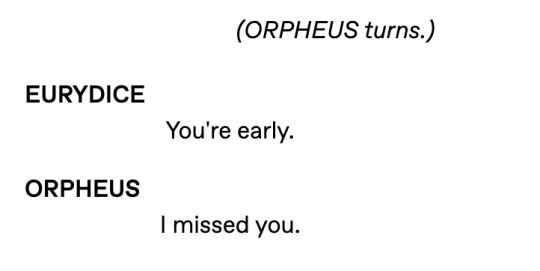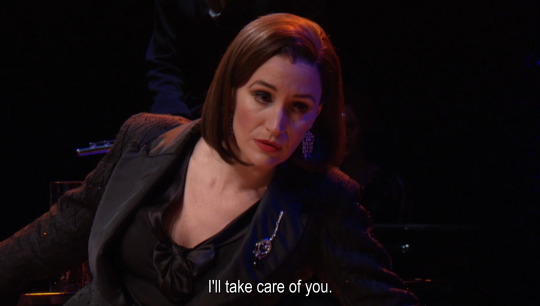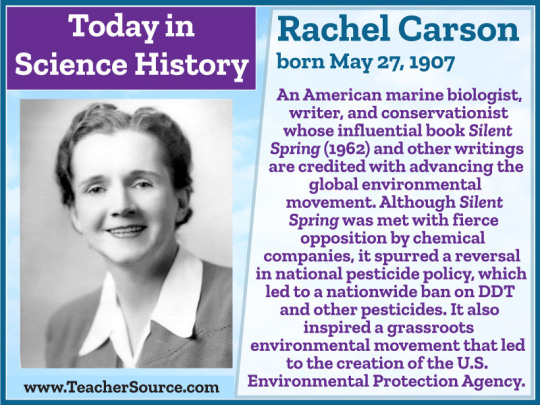#carson spring
Text
🐢 Câlin du jour 🐆
Source: Carson Springs Wildlife
Penzi, la tortue et Tuesday, le guépard en Floride 🥰
Bel après-midi 👋
#funny video#câlin du jour#cute animals#animaux#guépard#tortue#cute cheetah#cute tortoise#funny animals#carson spring#florida#penzi#tuesday#belaprèsmidi#fidjie fidjie
235 notes
·
View notes
Photo

— Anne Carson, The Glass Essay
3K notes
·
View notes
Text

Sappho, from If Not, Winter: Fragments of Sappho; tr. by Anne Carson
322 notes
·
View notes
Quote
Have we fallen into a mesmerized state that makes us accept as inevitable that which is inferior or detrimental, as though having lost the will or the vision to demand that which is good?
Rachel Carson, Silent Spring
#necessity#possibility#change#progress#time#values#meaning#humanity#quotes#Carson#Rachel Carson#Silent Spring
201 notes
·
View notes
Text

Surprise Carson
497 notes
·
View notes
Text

She lives on a moor in the north.
She lives alone.
Spring opens like a blade there.
#happy very very very early spring from the moors#the signs are starting. very soon everything will erupt. i can't wait#had a walk this morning and had a chat to the elderly farmer next door about his late-night lambing#lambs love to be born at the silliest time on the coldest darkest sorts of nights#anyway. i'm breathing deeply. the spring is coming. i'm having a lovely week off from work.#ted hughes#anne carson
92 notes
·
View notes
Text
If I screenshot every part of Ella that stands out to me I'd have HarperCollins suing me so to sum up Chapter One:
Gail absolutely nails writing Ella as a five year old, nine year old. Ella's delight in her birthday, her feeling special about having a fairy curse and then realizing how people can abuse it.
The fact that Ella didn't realize she had this "curse" until she was five!! That means Eleanor and Mandy (who does end up having a hard time not giving Ella "for your own good" commands) were parenting a preschooler without giving her direct commands!! They were consistently giving her choices!! While they probably did give her some commands (just spend five minutes with a two-year-old and you can see no commands would be impossible) the fact is that Ella didn't realize she was cursed until Mandy slipped up when she was five, so all commands were necessary to keep her safe and never to take away her choice.
The description of Ella eating slice after slice of cake and getting uncomfortably fuller and sicker with each bite is so visceral I feel my own stomach get bloated and pained every time I read it.
"If you commanded me to cut off my own head, I'd have to do it." You know this got the attention of every 10-year-old reading it. Stupid publisher. Also, yo, what high stakes here!
"I didn't know who my fairy godmother was." MANDY!!!
"Instead of making me docile, Lucinda's curse made a rebel of me. Or perhaps I was that way naturally." I've written about this before, but Ella doesn't give her mother the credit she deserves. Having this curse from birth means she could have been molded into a perfect little child. And we know from later on that Ella is far from the first child Lucinda gave this curse to. And I imagine that while the other parents were horrified and protective, they had to of used the curse to their advantage--and realistically, to different degrees of abuse. But Eleanor not only refuses to give commands to Ella, she eggs on the feud between Ella and Mandy! She is preparing her daughter as best she can to live in the world with this curse by using her wits. Mother of all time.
Ella and her mother sliding down the bannister, Ella so wanting to be like her, graceful but also fun! This book has Ella learning to develop into the woman her mother was and getting a happier ending.
Ella caring for her mother is so precious. Eleanor enjoying Ella's stories and encouraging her humor. Guh. I love that Eleanor isn't "elegant dead mother" but even in this one chapter is a full person. She's smart, funny, playful, regal, adoring of her daughter. I love her so much.
Ella's father. So absent, he doesn't know about the curse. Wasn't there for her birth. And so repulsive that Eleanor asks Mandy not to send for him when she's sick.
The candle grove as a nod to the hazel tree in some versions of the traditional Cinderella (including Grimms) where Cinderella makes a wish. Of course, Ella's in this case doesn't come true. :(
79 notes
·
View notes
Text

LETTERS FROM AN AMERICAN
April 21, 2024
HEATHER COX RICHARDSON
APR 22, 2024
During her confirmation hearings in 2021, Interior Department secretary Deb Haaland promised “to responsibly manage our natural resources to protect them for future generations—so that we can continue to work, live, hunt, fish, and pray among them.” Noting her Indigenous heritage, Haaland tweeted, “A voice like mine has never been a Cabinet secretary or at the head of the Department of Interior…. I’ll be fierce for all of us, our planet, and all of our protected land.”
Her approach was a shift from the practice the Interior Department had established at the beginning of the twentieth century when it began to prioritize mineral, oil, and gas development, as well as livestock grazing, on U.S. public lands. But the devastating effects of climate change have brought those old priorities into question.
Republicans, especially those from states like Wyoming, which collects more than a billion dollars a year in royalties and taxes from the oil, gas, and coal produced on federal lands in the state, opposed Haaland’s focus on responsible management of natural resources for the future and warned that the Biden administration is “taking a sledgehammer to Western states’ economies.”
On Thursday, April 18, the Interior Department finalized a new rule for a balanced management of America’s public lands. Put together after a public hearing period that saw more than 200,000 comments from states, individuals, Tribal and local governments, industry groups, and advocacy organizations, the new rule prioritizes the health of the lands and waters the Interior Department’s Bureau of Land Management oversees. Those consist of about 245 million acres, primarily in 12 western states.
The new rule calls for protection of the land, restoration of the places that have been harmed in the past, and a promise to make informed decisions about future use based on “science, data, and Indigenous knowledge.” It “recognizes conservation as an essential component of public lands management, on equal footing with other multiple uses of these lands.” The Bureau of Land Management will now auction off leases not only for drilling, but also for conservation and restoration.
Western state leaders oppose the Biden administration’s efforts to change the Interior Department’s past practices, calling them “colonial forces of national environmental groups who are pushing an agenda” onto states like Wyoming.
The timing of the Interior Department’s new rule can’t help but call attention to Earth Day, celebrated tomorrow, on April 22. Earth Day is no novel proposition. Americans celebrated it for the first time in 1970. Nor was it a partisan idea in that year: Republican president Richard M. Nixon established it as Americans recognized a crisis that transcended partisanship and came together to fix it.
The spark for the first Earth Day was the 1962 publication of marine biologist Rachel Carson’s Silent Spring, which showed the devastating effects of people on nature by documenting the effect of modern pesticides on the natural world. Her exposé of how the popular pesticide DDT was poisoning the food chain in American waters illuminated the dangerous overuse of chemicals and their effect on living organisms, and it caught readers’ attention. Carson’s book sold more than half a million copies in 24 countries.
Democratic president John F. Kennedy asked the President’s Science Advisory Committee to look into Carson’s argument, and the committee vindicated her. Before she died of breast cancer in 1964, Carson noted: "Man's attitude toward nature is today critically important simply because we have now acquired a fateful power to alter and destroy nature. But man is a part of nature, and his war against nature is inevitably a war against himself? [We are] challenged as mankind has never been challenged before to prove our maturity and our mastery, not of nature, but of ourselves."
As scientists organized the Environmental Defense Fund, Americans began to pay closer attention to human effects on the environment, especially after three crucial events. First, on December 24, 1968, astronaut William Anders took a color photograph of the Earth rising over the horizon of the moon from outer space during the Apollo 8 mission, powerfully illustrating the beauty and isolation of the globe on which we all live.
Then, over 10 days in January and February 1969, a massive oil spill off the coast of Santa Barbara, California, poured between 80,000 and 100,000 barrels of oil into the Pacific, fouling 35 miles of California beaches and killing seabirds, dolphins, sea lions, and elephant seals. Public outrage ran so high that President Nixon went to Santa Barbara in March to see the cleanup efforts, telling the American public that “the Santa Barbara incident has frankly touched the conscience of the American people.”
And then, in June 1969, the chemical contaminants that had been dumped into Cleveland’s Cuyahoga River caught fire. A dumping ground for local heavy industry, the river had actually burned more than ten times in the previous century, but with increased focus on environmental damage, this time the burning river garnered national attention.
In February 1970, President Nixon sent to Congress a special message “on environmental quality.” “[W]e…have too casually and too long abused our natural environment,” he wrote. “The time has come when we can wait no longer to repair the damage already done, and to establish new criteria to guide us in the future.”
“The tasks that need doing require money, resolve and ingenuity,” Nixon said, “and they are too big to be done by government alone. They call for fundamentally new philosophies of land, air and water use, for stricter regulation, for expanded government action, for greater citizen involvement, and for new programs to ensure that government, industry and individuals all are called on to do their share of the job and to pay their share of the cost.”
Meanwhile, Gaylord Nelson, a Democratic senator from Wisconsin, visited the Santa Barbara oil spill and hoped to turn the same sort of enthusiasm people were bringing to protests against the Vietnam War toward efforts to protect the environment. He announced a teach-in on college campuses, which soon grew into a wider movement across the country. Their “Earth Day,” held on April 22, 1970, brought more than 20 million Americans—10% of the total population of the country at the time—to call for the nation to address the damage caused by 150 years of unregulated industrial development. The movement included members of all political parties, rich Americans and their poorer neighbors, people who lived in the city and those in the country, labor leaders and their employers. It is still one of the largest protests in American history.
In July 1970, at the advice of a council convened to figure out how to consolidate government programs to combat pollution, Nixon proposed to Congress a new agency, the Environmental Protection Agency, which Congress created that December.
In honor of Earth Day 2024, Democratic president Joe Biden has called for carrying on the legacy of our predecessors “by building a greener, more sustainable planet and, with it, a healthier, more prosperous nation.”
In a statement, Biden noted that no one can any longer deny the impacts and staggering costs of climate change as the nation confronts historic floods, droughts, and hurricanes.
“Deforestation, nature loss, toxic chemicals, and plastic pollution also continue to threaten our air, lands, and waters, endangering our health, other species, and ecosystems,” he said. He noted the administration’s efforts to build a clean energy economy, providing well-paid union jobs as workers install solar panels, service wind turbines, cap old oil wells, manufacture electric vehicles, and so on, while also curbing air pollution from power plants and lead poisoning from old pipes, the burden of which historically has fallen on marginalized communities.
Biden noted that he brought the U.S. back into the Paris Climate Accord Trump pulled out of, is on track to conserve more lands and waters than any president before him, and has worked with the international community to slash methane emissions and restore lost forests.
And yet there is much more to be done, he said. He encouraged “all Americans to reflect on the need to protect our precious planet; to heed the call to combat our climate and biodiversity crises while growing the economy; and to keep working for a healthier, safer, more equitable future for all.”
Happy Earth Day 2024.
LETTERS FROM AN AMERICAN
HEATHER COX RICHARDSON
#Heather Cox Richardson#earth day#history#Letters From An American#Conservation#natural resources#Interior Department#Silent Spring#Rachel Carson
25 notes
·
View notes
Text
The price of love is loss but still we pay. We love anyway.
A man wrote to me: We missed it, you and I. We were meant to mean a great deal to one another; but we missed it.

There must have been a moment, at the beginning, where we could have said -- no. But somehow we missed it. Oh well, we'll know better next time.

The lover wants what he does not have. It is by definition impossible for him to have what he wants if, as soon as it is had, it is no longer wanting.


INEZ [almost tenderly]: Why did you hurt her like that?

MELCHIOR. Goodbye, Moritz. Thank you for coming back to see me. I shall remember all the happy carefree hours we spent together. I promise you that, whatever happens to me in the future, however I may alter with the years, you I will never forget.
MORITZ. Thank you. You're still my best friend.

1. next to normal 2. correspondence in after years (dh lawrence) 3. hadestown (nytw version) 4. rosencrantz and guildenstern are dead 5,8. no exit 6. eros the bittersweet 7. company 9. portrait of a lady on fire 10. spring awakening (1891) 11. farewell to arms
#quotes#musicals#broadway#poems#poetry#novels#literature#dh lawrence#hadestown#rosencrantz and guildenstern are dead#tom stoppard#no exit#sartre#sondheim#anne carson#spring awakening#ernest hemingway#love#devotion#next to normal#aesthetic#generally this seems to be very#orpheus and eurydice#coded#???#idk i just vibe with this particular brand of pretty words but i have no idea what to call it so#poalof
534 notes
·
View notes
Photo

Rachel Carson was born on May 27, 1907. An American marine biologist, writer, and conservationist whose influential book Silent Spring (1962) and other writings are credited with advancing the global environmental movement. Although Silent Spring was met with fierce opposition by chemical companies, it spurred a reversal in national pesticide policy, which led to a nationwide ban on DDT and other pesticides. It also inspired a grassroots environmental movement that led to the creation of the U.S. Environmental Protection Agency.
#rachel carson#silent spring#environmentalists#environment#environmental protection#environmental protection agency#EPA#DDT#women in science#women in history#science#science history#science birthdays#on this day#on this day in science history
62 notes
·
View notes
Text

Anne Carson, from The Glass Essay
79 notes
·
View notes
Quote
Most of us walk unseeing through the world, unaware alike of its beauties, its wonders, and the strange and sometimes terrible intensity of the lives that are being lived about us.
Rachel Carson, Silent Spring
229 notes
·
View notes
Text

Carson
393 notes
·
View notes
Text
“[Rachel Carson] wanted her readers to take warning and take action, not just revert to contemplating (with either pleasure or depression) the inevitable end of life.” And No Birds Sing: Rhetorical Analyses of Silent Spring, ed. Craig Waddell
“There’s no ‘we’re fucked’, it will get better or it will get worse.” Lovett or Leave It Podcast
"Despair is paralysis. It robs us of agency. It blinds us to our own power and the power of the earth. Environmental despair is a poison every bit as destructive as the methylated mercury in the bottom of Onondaga Lake. But how can we submit to despair while the land is saying "Help"? Restoration is a powerful antidote to despair. Restoration offers concrete means by which humans can once again enter into positive, creative relationship with the more-than-human world, meeting responsibilities that are simultaneously material and spiritual. It's not enough to grieve. It's not enough to just stop doing bad things." Braiding Sweetgrass, Robin Wall Kimmerer
“Talking about it makes it seem like giving up might be the cool thing to do, and it’s definitely not. It’s a betrayal of the future. It’s a betrayal of the past too! It’s also a betrayal of the present. Don’t give up! We are only past saving when we believe we are past saving.” youtube video “Is It All Hopeless?”, Hank Green
“If Carson had given over totally to apocalyptic rhetoric, she would have forsaken her scientific outlook on life. There may be no completely happy endings in the master narrative of scientific research, but neither is there a scene of total destruction. There are, as in tragedy, the signs of rebirth and continuance. The work continues, the search goes on.” And No Birds Sing: Rhetorical Analyses of Silent Spring, ed. Craig Waddell
"We could take the path of fear and despair. We could document every scary scene of ecological destruction and never run out of material for a Haunted Hayride of environmental disasters, constructing a shocking nightmare tableaux of environmental tragedies, in rooms carved from a monoculture of invasive plants, on the shore of the most chemically contaminated lake in the United States. […] What could such a vision create other than woe and tears? Joanna Macy writes that until we can grieve for our planet we cannot love it--grieving is a sign of spiritual health. But it is not enough to weep for our lost landscapes; we have to put our hands in the earth to make ourselves whole again. Even a wounded world is feeding us. Even a wounded world holds us, giving us moments of wonder and joy. I choose joy over despair. Not because I have my head in the sand, but because joy is what the earth gives me daily and I must return the gift.” Braiding Sweetgrass, Robin Wall Kimmerer
“We need all hands on deck, and there’s a lot of deck.” Rabbi Danya Ruttenberg
“Say these words when you lie down and when you rise up,
when you go out and when you return. In times of mourning
and in times of joy. Inscribe them on your doorposts,
embroider them on your garments, tattoo them on your shoulders,
teach them to your children, your neighbors, your enemies,
recite them in your sleep, here in the cruel shadow of empire:
Another world is possible.” “V’ahafta”, Aurora Levin Morales
#is this what the kids call web weaving??#putting links to the video and poem in the reblog please reblog the version with those#silent spring#rachel carson#and no birds sing#craig waddell#braiding sweetgrass#robin wall kimmerer#hank green#lovett or leave it#rabbi danya ruttenberg#aurora levin morales#mary emma’s posts
100 notes
·
View notes
Text

FIRST PARAGRAPH OF ALL TIME.
I'm pretty sure this is where I learned the power of alliteration with "that fool of a fairy" hitting us right off the bat. And I love how Ella's voice comes out straightaway here: her snarky remarks about Lucinda and painting the picture of how she imagines all of this happened. I love the rhythm of this whole thing, too. Gail has a gift for this kind of writing that pops up throughout the book.
The way Lucinda's intentions are given right away: she meant to give a blessing, but she ended up giving a curse. So often adults try to give "blessings" to the children in their lives, but the intention doesn't matter. It becomes a curse. And the thing is, the "gift" wasn't for Ella, it was for her mother which Ella describes here as Lucinda "shaking her head sympathetically at Mother." Ella was crying for any number of reasons as a newborn baby. Was she too cold? Hungry? Colicky? We don't know. From what we know of Eleanor and Mandy, they were certainly trying their best to calm her. And I certainly can't blame them if they were getting frazzled or anxious. But instead of asking, "hey, what can I help with? Do you want me to look after Ella while you rest? Do you want me to get anything you might need?" Lucinda instead takes it upon herself to clear up the problem not by getting at the source of Ella's reason for crying, but ending the crying itself. Crying is vital communication for a literal hour-old baby and Lucinda took away her communication, her voice, her choice. While we do not have fairy curses, many parents come up with this same solution: Just stop crying, stop whining, stop being mean, stop fidgeting, stop, stop, stop.
Ella shows the horror of letting that attitude go too far.
21 notes
·
View notes
Text

The history of life on earth has been a history of interaction between living things and their surroundings. To a large extent, the physical form and the habits of the earth's vegetation and its animal life have been molded by the environment. Considering the whole span of earthly time, the opposite effect, in which life actually modifies its surroundings, has been relatively slight. Only within the moment of time represented by the present century has one species-man-acquired significant power to alter the nature of his world.
—Rachel Carson, Silent Spring (1962)
[Robert Scott Horton]
19 notes
·
View notes